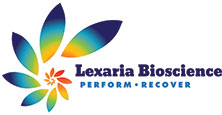- Filing for IGC-506 anticipated to be completed in the U.S. in 2019, expanding the company’s patent portfolio; company is looking at pre-clinical trials for three of its combination drugs, possibly creating enhanced valuation
- IGC has pre-clinical trial scheduled in 2018 for IGC-AD1, a combination-therapy drug designed to treat Alzheimer’s
- IGC-506 is a combination therapy developed from cannabis extracts and other compounds that’s designed to treat multiple types of eating disorders in humans and animals
India Globalization Capital, Inc. (NYSE American: IGC) (FRA: IGS1) anticipates a Patent Cooperation Treaty (“PCT”) filing application by February 28, 2018, for IGC-506, which is designed for the treatment of multiple types of eating disorders in humans, as well as animals in the veterinary market. The company anticipates a U.S. and national filing by August 28, 2019, the company announced (http://dtn.fm/MsLB4). A PCT filing is an international patent filing effective in a number of foreign countries (http://dtn.fm/UrSh0).
The company has a number of provisional patent filings, either already made or anticipated in the future, which could raise its valuation. It already has three products, scheduled for pre-clinical trials, featuring provisional filings for patents. These include IGC-501, a cream/patch for the treatment of neuropathic pain; IGC-502, a veterinary market product for the treatment of seizures; and IGC-504 for the treatment of eating disorders in adult humans as well as for the veterinary market. In 2018, IGC anticipates a pre-clinical trial for IGC-ADI, which is designed to treat Alzheimer’s disease.
IGC is a Maryland-based company engaged in the development of cannabis-based combination therapies to treat Alzheimer’s, several endpoints of Parkinson’s, pain, nausea, eating disorders and epilepsy in dogs and cats. It has two lines of businesses. The first, legacy infrastructure, consists of heavy equipment rental, commodities trading and real estate management. The other is canna-pharmaceutical.
IGC-506 is a combination therapy drug, developed from cannabis-extracts and other compounds, designed to treat multiple types of eating disorders. Cannabinoids are chemical compounds that exert a range of effects on the body. The non-psychoactive phytocannabinoid, cannabidiol (CBD), influences many pathways in humans, as well as cats and dogs, and may be used to provide relief for numerous symptoms ranging from pain to eating disorders.
For more information, visit the company’s website at www.IGCInc.us







